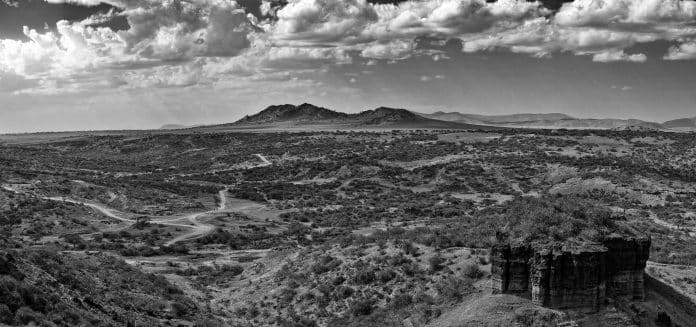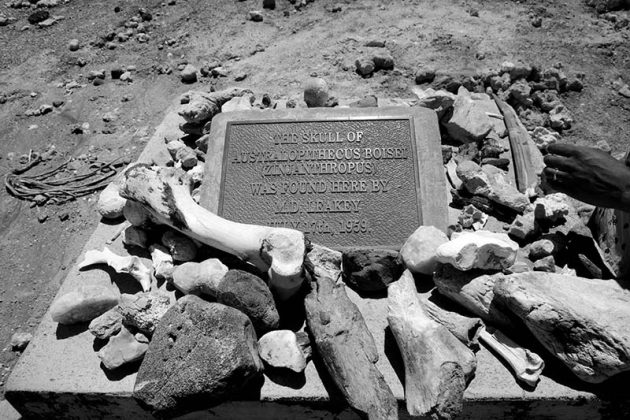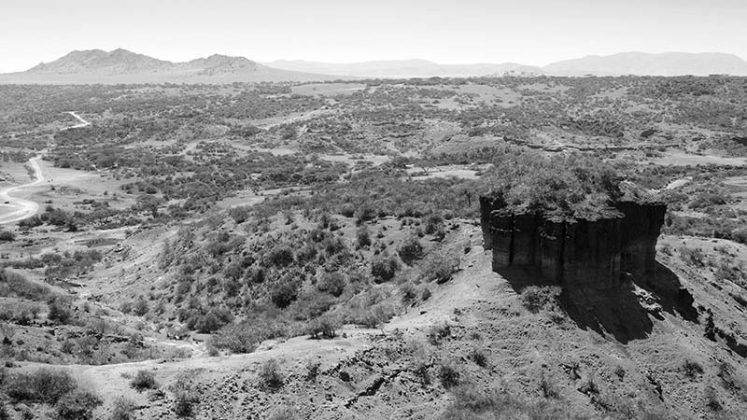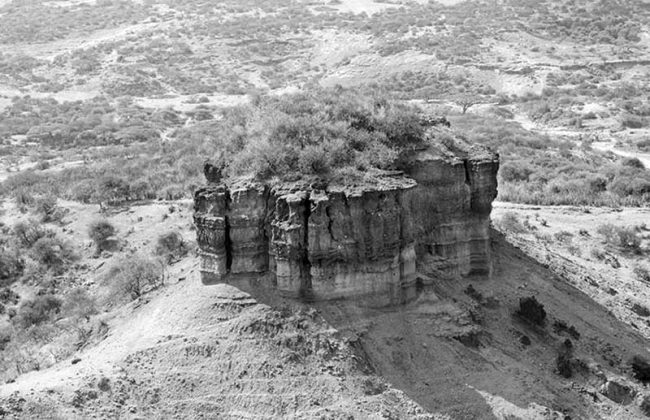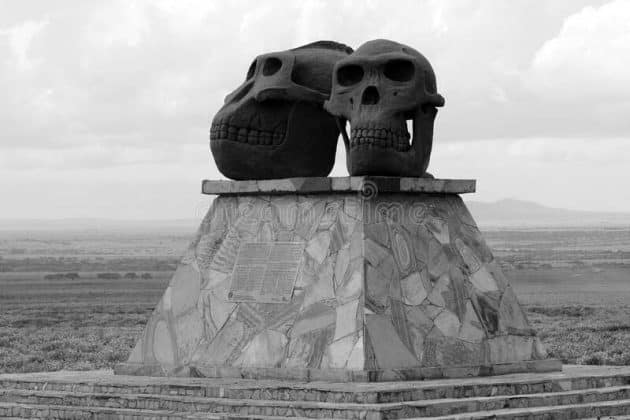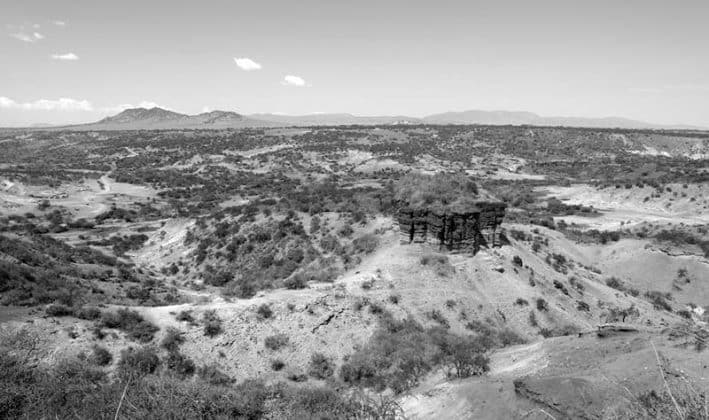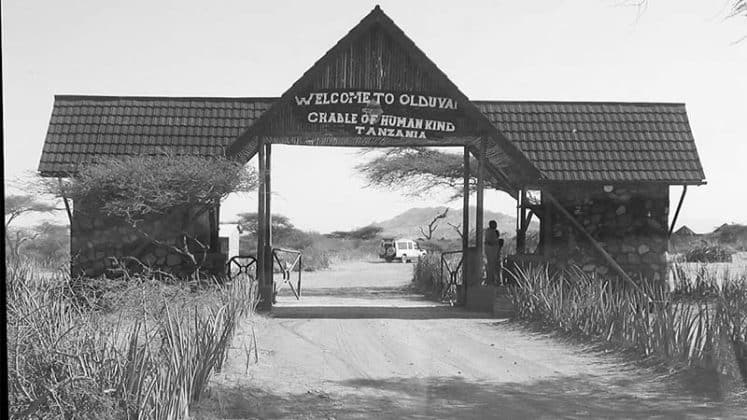Africa Olduvai Gorge Tanzania – Discovery, Archaeology, Geology, Stone Tools and More
Olduvai Gorge Location
Most people are familiar with the name of the gorge from touristic information, but they never really know where are the Olduvai Gorge historical sites Tanzania location exactly.
This Gorge is also known as Oldupai Gorge located in Tanzania is among the world’s most significant paleoanthropological locations; it proved to be very valuable in enhancing understanding of early man’s evolution. A sharp-sided gorge in the East African Great Rift Valley, it is approximately 48 kilometres (30 miles) long and is found east of Serengeti Plains in the Ngorongoro Conservation Area (NCA) Arusha Region, around 45 kilometres (28 miles) away from Laetoli, also an important archaeological area of man’s early occupation. Louis and Mary Leakey, a Kenyan/ British team of paleoanthropologist-archeologist formed and developed the research and excavation projects at Olduvai Gorge that achieved significant improvements in human knowledge as well as world-renowned status.
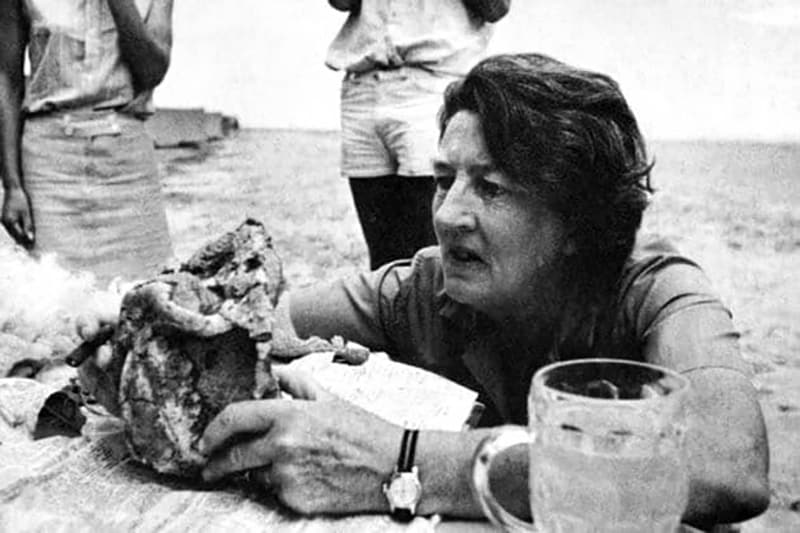
Olduvai Gorge Definition and What is Olduvai George Exactly
The gorge gets its name from Oldupai, a Maasai people word that translates Olduvai George meaning as “the area of the wild sisal” (the way the native Maasai would define Olduvai George) since wild sisal in East Africa (Sansevieria ehrenbergii) grows very much all over the gorge area. Twenty-five kilometers down Lake Masek and Lake Ndutu streams, the gorge carves into Pleistocene layers of the lake bed to about 90 metres deep. A side gorge, coming from Lemagrut Mountain, meets the big gorge 8 kilometres from the mouth. The side gorge moved along the prehistoric lake’s shoreline, filled with early hominin sites and fossils. Occasional flows of ash from Kerimasi and Olmoti volcanoes helped to maintain the preservation of the gorge’s fossils.
The Olduvai Gorge Anthropology Importance
The site is very important in showcasing the growing social and developmental complexities in the earliest people, or hominins, mainly revealed in the making and use of tools out of stone. Before the tools, evidence of hunting and scavenging can be seen—highlighted by the visibility of gnaw marks which predate cut marks—as well as the fraction of meat to plant substance in the diet of the early hominin. The pile of animal remains and tools in the main area are proof of developing communal activity and social interaction. All these factors portray growth in cognitive abilities at the onset of the transitional period of hominids to hominin—i.e., to human—behavior and form.
Homo habilis, perhaps the earliest human species, inhabited Olduvai Gorge about 1.9 million years ago (MYA); afterward came a Paranthropus boisei, modern australopithecine, 1.8 MYA, then the Homo erectus, 1.2 MYA. The species Homo sapiens, considered to have emerged about 300,000 years back, is dated to have inhabited the site 17,000 years back. Now, this brings us to the questions of who exactly who discovered Olduvai Gorge?
Exploration and Discovery of Olduvai Gorge in Tanzania
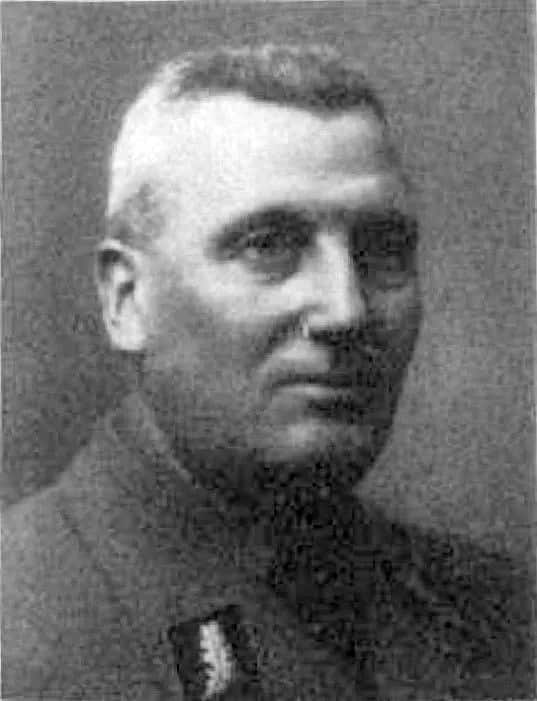
When was Olduvai Gorge Discovered?
Olduvai George discovery and exploration in 1911 happened while on a journey in German East Africa to examine sleeping sickness by the German archaeologist and physician Wilhelm Kattwinkel who toured Olduvai Gorge. He he saw various fossil bones of a rare three-toed horse. With inspiration from Kattwinkel’s discovery, Hans Reck, a German geologist commanded a team to Olduvai Gorge by 1913. There, he discovered hominin relics that were later radiocarbon traced to 17,000 before the present. Four additional expeditions were planned; however World War I barred their start.
What Did the Leakeys Discover in Olduvai Gorge Africa?
Here is a quick recap of what was found in Olduvai Gorge and probably the reason why is Olduvai Gorge important today:
At the end of the war, Britain gained control over Tanganyika; Louis Leakey visited Reck in Berlin and observed the Olduvai Gorge fossils. He believed that Olduvai Gorge had stone tools, hoping the deposits were as old as Kenya’s Kariandusi prehistoric site. Reck and Donald McInnes, a paleontologist joined Louis Leakey on his expedition in 1931, Olduvai Gorge Louis Leakey discoveries consisted of various hand axes close by the camp immediately after their arrival. In 1935, Mary Leakey made the first visit to the Olduvai Gorge archaeological site, joining the other two Olduvai Gorge Paleontologists Percy and Louis Edward Kent. The Leakeys made subsequent Olduvai George visit in 1941, 1953, 1955, and 1957.
Mary and Louis Leakey did most of the digging and findings of the hominin remains at Olduvai Gorge. By July 1959, Mary Leakey discovered the skull of Zinjanthropus also known as Australopithecus boisei at the FLK site (short form of the person who found it- Frida Leakey, and K for Korongo, meaning gully in Swahili language). Apart from abundant faunal relics, the Leakeys discovered stone implements that Mary labeled as Oldowan. By May 1960, at the northmost part of the FLK site, Jonathan, the Leakeys’ son discovered a mandible that turned out to be a Homo habilis specimen.
Why is Olduvai Gorge Important to Archaeologists?
Significance of Olduvai Gorge Archaeology and Topography
Richard Hay and Hans Reck
Although Hans Reck, a geologist made the first attempt to study the topography of the gorge, today’s understanding of Olduvai Gorge’s geology concerning stratigraphic sequence was mainly made possible by geologist Richard Hay’s efforts. Hay spent 12 years examining the Olduvai’s geology, most times working with Mary Leakey, at last creating a detailed portrayal of the area’s geologic history. In 1976, Hay published The Geology of the Olduvai Gorge, his seminal work.
Reck identified 5 major depositional layers in the gorge, that were named Beds I to V, having Bed I as the lowest and oldest in the order. Hay with other geologists operating at the gorge from Reck’s time have used Reck’s original Bed synopsis, including clarity, corrections, and detail to get a deeper understanding of the gorge’s history. Reck’s first Bed IV interval got distinguished later as incorporating Bed IV as well as the Masek Beds, although Bed V got renamed as Ndutu Bed and Naisiuiu Bed.
Stratigraphy of the Olduvai Gorge Tanzania Africa Site
The stratigraphic order in the gorge reaches a thickness of 90 metres, having the Naabi ignimbrite, a welded tuff as the base. Various lava flows overlain this from Otmoi including another southern source. The earliest Olduvai George fossils are located on this surface, traced to 1.89 MYA, however, stone tools are traced to 1.7 MYA through the initial use of K-Ar tracing by Garniss Curtis.
Furthermore, fission track tracing and paleomagnetism were utilized to trace the deposits, although amino acid tracing and Carbon-14 tracing were utilized to trace the bones. Hominid remains and stone implements are found continually throughout the whole revealed order in the gorge. Rifting between 100 and 30 KYA created the Olbalbal Depression in the north of Ngorongoro.
Bed I
The lower Pleistocene Bed I with sediments having a thickness between 20 to 46 metres covering the welded tuff basalt with sediments of Olmoti tuff as well as lake sediment claystone. Noteworthy are four well-preserved present sites located within the FLK, FLK North-North, and Bed I sites mentioned above, including FLK North and DK. The DK site (with the first initial from Donald McInnes and K for Korongo) has various tools, a stone circle, and fossil bones, with the age ranges from 1.75 to 1.9 MYA.
Bed II
This includes 21–35 metres of sandstone and clay with a thickness of 23 to 35 metres of Olduvai Lake as well as stream sediments. Manuports are in abundance at the Mark Nicol Korongo (MNK) site and a chert nodule quarry having more than 14,000 pieces with lava anvils, hammerstones, and gneiss. Hand axes were discovered at the Evelyn Fuchs-Hans Reck (EF-HR) and Thiongo Korongo (TK) sites. Bell’s Korongo (BK) site included an Australopithecus boisei deciduous canine and molar.
Bed III
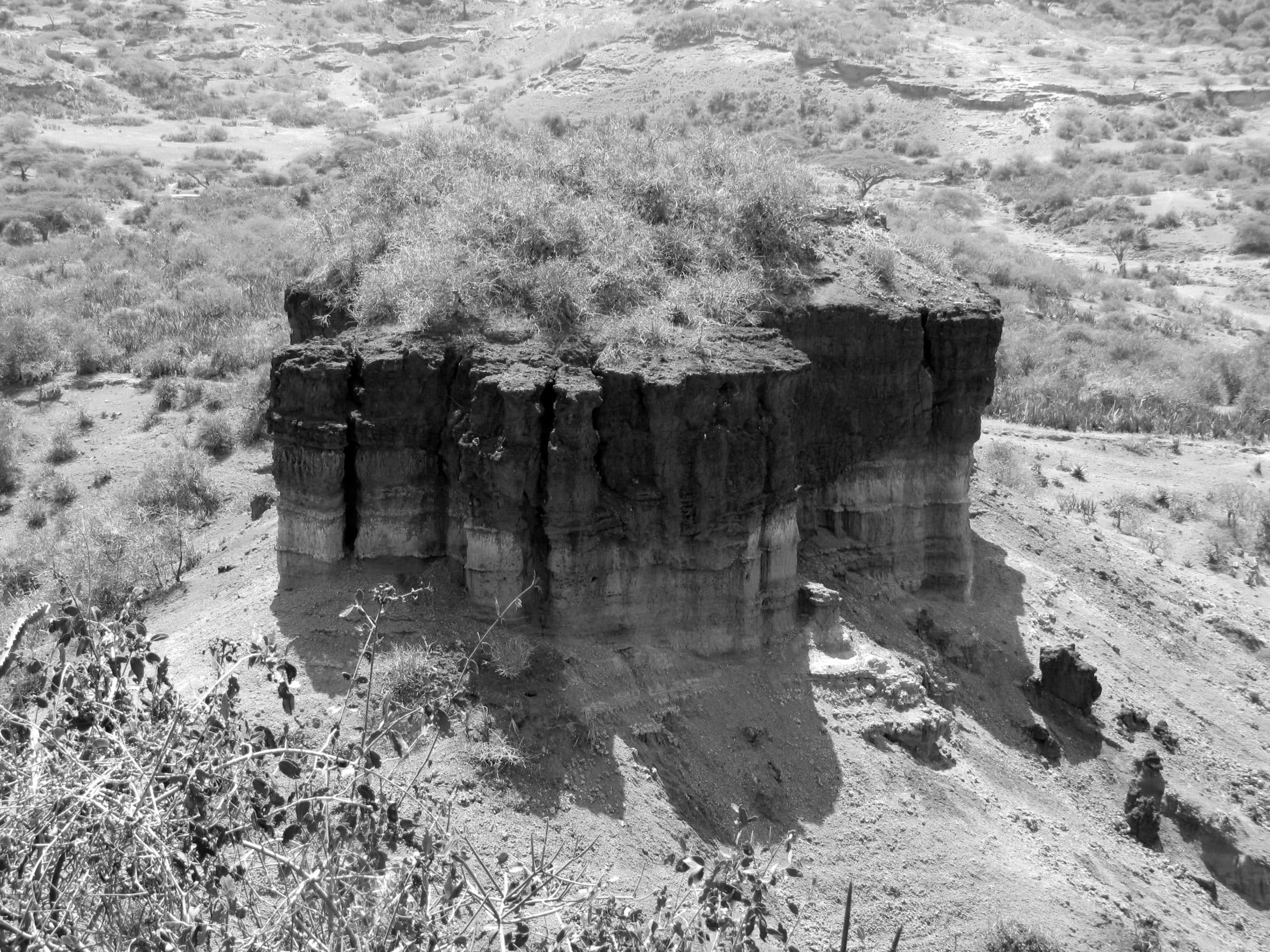
Distinctly red, Bed III includes sandstones, clay and conglomerates 6–10 metres showing variations in lake depths. Some fossils are available including some isolated stone implements, indicating a sparse presence of early man.
Bed IV
Distinctively has no similarity to Bed II in the gorge’s eastern part. There, clays, stream sediment sandstones, and conglomerates have a thickness of 5–8 metres. Four different tool-bearing layers are clear, including 500 cleavers and handaxes at the Hopwood’s Korongo (HK) site, while a handaxe made from elephant bone and phonolite handaxes were discovered at the Heberer’s Gully (HEB) site. The Wayland’s Korongo (WK) site had a femur and Homo erectus pelvis.
Masek Beds
These include two aeolian ash episodes from Kerimasi. Various quartzite hand axes were discovered in this sediment at the FLK location. Dunes created after the buildup of Ol Doinyo Lengai constitute the upper part of the Ndutu Beds, however yield hardly any remains. Ol Doinyo Lengai tuffs also constitute the Naisiusiu Beds.
Related Fossil Species
Some Australopithecus boisei fossils, which include a thigh bone fragment, several teeth, and a skull were discovered distributed all over Beds I and II dating them ranging from 1.1 to 2 MYA. Prominent Homo habilis remains were discovered in Bed I including the lower part of Bed II that makes them Australopithecus boisei contemporaries. Homo erectus fossils were discovered in Bed II upper portions, making them Australopithecus boisei contemporaries, however not of Homo habilis.
Apart from Zinjanthropus, What Did Leakeys Discover in Olduvai Gorge?
Olduvai George Leakey Stone Implements and Their Creators
Another significant importance of Olduvai George are the stone discoveries and their creators. In 1951, Louis Leakey Olduvai George finding was the first to describe the Oldowan stone implement industry. The Leakeys proved that the prominent stone tool discovered at the site choppers were amounting to more than half of the overall number, and were discovered in 11 Oldowan sites of the gorge, 2 in Bed II and 9 in Bed I. They also discovered the developed Oldowan to be the successive diverse toolkit discovered in Beds II, III, as well as IV, having small implements made mainly from chert instead of quartzite. These implements are mainly spheroids and sub-spheroids, succeeded by choppers.
Apart from Bed II’s chert quarry, the Leakeys managed to recognize the other source areas of the main rocks used to create the stone implements. Quartzite was the prominent material that came from the Naibor Soit Inselberg in the northern part of the gorges. Engelosen volcano 5 kilometres in the north was the origin of the phonolite. The gneiss originated from the Kelogi inselborg 9 kilometres in the southwest.
The initial species discovered by the Leakeys, Australopithecus boisei or Zinjanthropus boisei or (given a new name and still considered Paranthropus boisei), had large molars and a sagittal crest. These features suggested the species did heavy chewing, revealing a diet of tough plant material, such as nuts, seeds, and tubers, —and perhaps large amounts of sedges and grasses.
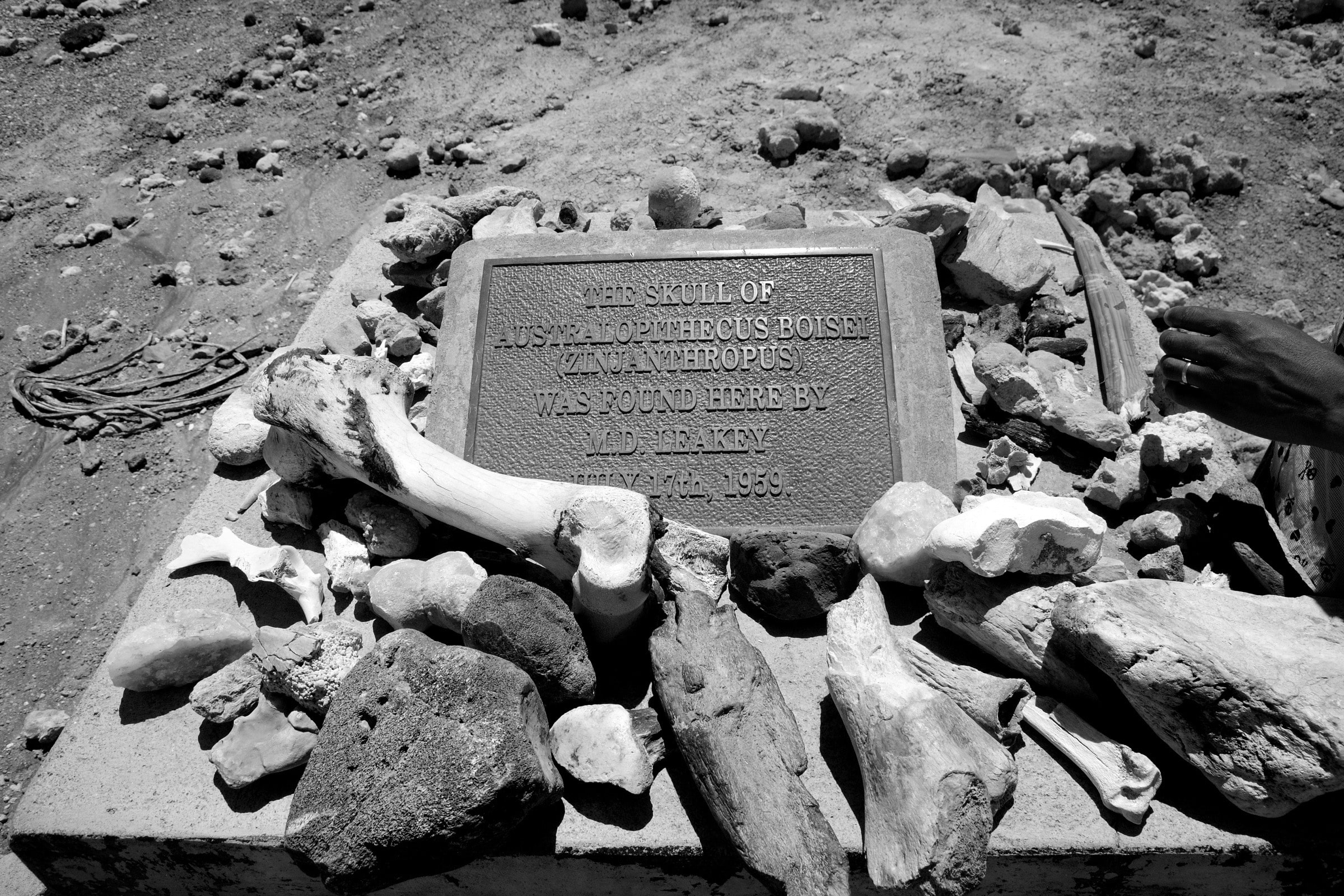
On the contrary, Leakeys’ 1960s discovery presented different features. The Olduvai George skull missed a sagittal crest with the braincase much more rounded, implying it wasn’t australopithecine. The bigger braincase implied a bigger brain capacity compared to that of Australopithecus boisei. The presence of these significant differences implied a different species that was eventually named Homo habilis. The bigger brain capacity with decreased teeth size signified the potential toolmaker as the Homo.
What Tools Were Found in Olduvai Gorge?
The earliest tools at Olduvai Gorge, discovered at the lowest level and grouped as Oldowan, include pebbles chipped on an edge. Beyond this layer, and thereafter, are the real handaxe makers, the Acheulean and Chellean. Higher still (including in the future too) are located Levallois antiques, and consequently the Stillbay implements. Oldowan implements generally are known as “pebble tools” since the blanks selected by the stone knapper in pebble form originally resembled the finished product.
Mary Leakey grouped the Oldowan implements depending on usage; she came up with Oldowan A, B, and C groups, with links to Modes 1, 2, and 3 assemblies classified depending on manufacturing mode. Her work is still a foundation for evaluating local, regional, and continental adjustments in stone implement-making in the early Pleistocene, including aids in evaluating what hominins were liable for the various changes in stone implement technology over time.
It is mysterious which hominin species started creating Oldowan implements. The coming up of implement culture has also been related to Australopithecus garhi, a pre-Homo species, and its success is related to the early Homo ergaster and Homo habilis species. Starting 1.7 million years back, early Homo erectus seemingly took on Oldowan technology including refining it into the Acheulean industry.
Oldowan implements happen in Beds I to IV at Oldupai Gorge. Bed I, dating back 1.85 to 1.7 MYA, includes Oldowan implements and Homo habilis and Paranthropus boisei fossils just like Bed II, from 1.7 to 1.2 MYA. Homo erectus emerged from H. habilis at approximately 1.6 MYA, although P. boisei remained. Oldowan implements move to Bed IV at 800,000 to 600,000 before present (BP). A major change happened between Beds I and II at around 1.5 MYA.
Increased flake size, the extent of bifacial edges (against single-face edges) happened more frequently with their increased length, and symptoms of battering increased on other artifacts. Some potential effects of these aspects, among others, include that after this crucial moment hominins used implements more frequently, got better at making implements, and moved tools more frequently.
Scavengers or Hunters?
Despite the discovery of considerable evidence of scavenging and hunting at Olduvai Gorge, there’s a belief by archaeologists that hominins who inhabited the area from 1.9 to 1.7 million years back spent most of their time collecting wild plants for foods, including tubers, berries, and roots. The first hominins most likely didn’t rely on meat as a bigger portion of their nutrition. Presumptions regarding the quantity of meat as part of their diets are implied from comparative research with early hominins’ next of kin: the modern chimpanzee. Only 5 percent of a wild chimpanzee’s diet is meat.
Additionally, modern hunter-gatherers’ diets don’t include a huge amount of meat. Plants are the significant sources of most calories in the diets of both groups. Consequently, it can be presumed that the first hominins had the same diet proportions, (check the mid-range theory or connecting arguments— archaeologists use bridging arguments to explain past habits, and they consist of an underlying presumption of uniformitarianism.)
Most information regarding early hominins is from heaps of lithic flakes’ debris and tools out of sites including Olduvai Gorge’s FLK-Zinjanthropus. The first hominins chose particular rock types that would split predictably when “worked”, and hauled these rocks various kilometres away from their deposits. Archaeologists including Fiona Marshall refitted rock fragments like a puzzle. In an article depicting her life in Oldupai Gorge she stated that the first hominins knew which angle to crush the core of cobble to successfully get sharp-edged flakes . She revealed that selected flakes were then used for cutting animal carcasses for meat, and shaped cobbles (known as choppers) were for extracting marrow and chopping rough plant material.
There was discovery of bone fragments of fish, birds, large mammals, and amphibians at the FLK-Zinj site, with most having scars. These probably were created by hominins bursting up bones for marrow, by carnivores after gnawing the bones, or utilizing implements for stripping the meat. Since various forms of marks happen together, some archaeologists along with Lewis Binford believe that hominins took over marrow or meat left behind after kills by carnivores. Others including Henry Bunn think the hominins hunted as well as killed these animals, with carnivores chewing the bones afterward.
There’s still debate about this issue today, however, archaeologist Pat Shipman offered proof that scavenging was perhaps the prominent practice; from her publication, most carnivore teeth marks happened before the cut marks. Shipman made another finding at FLK-Zinj that most wildebeest bones discovered there are mostly male and adult bones, and this might portray that hominins were meticulously hunting these animals and scavenging them. The topic of hunting against gathering at Oldupai Gorge remains a controversial.
Which Fossil Find was Located in Olduvai Gorge in Tanzania
Hominid Fossils Discovered at Olduvai Gorge
- Olduvai Hominid 5
- Olduvai Hominid 62
- Olduvai Hominid 8
- Olduvai Hominid 7
- Olduvai Hominid 9
- Olduvai Hominid 24
Tanzania’s Olduvai Gorge Museum and Monument
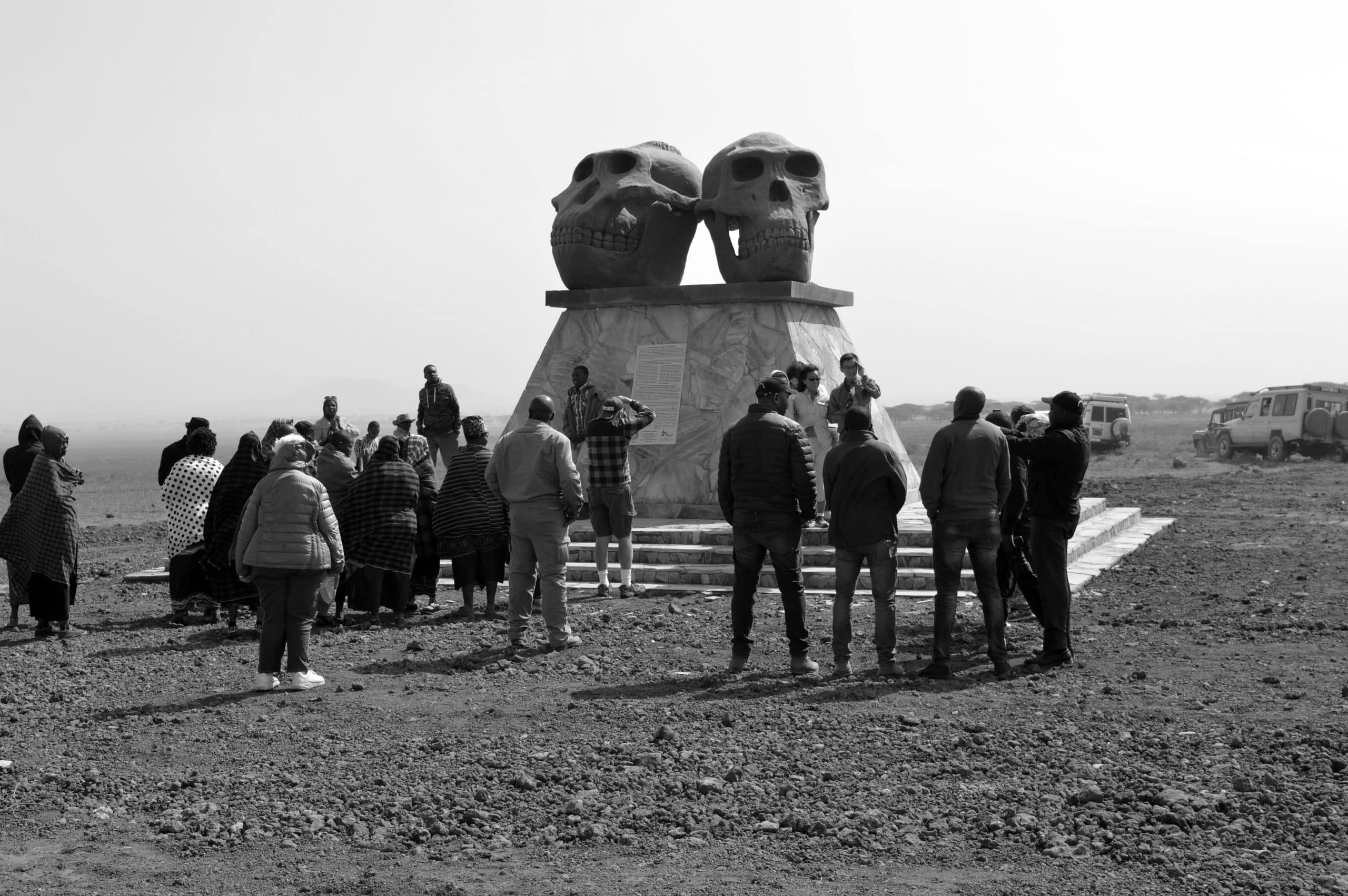
By July 2019, the Olduvai Gorge monument was put up at the branch off to Oldupai Gorge from the road that joins Ngorongoro Conservation Area to Serengeti National Park (Tanzania safari-goers use this route). Paleoanthropologists Jackson Njau, Kathy Schick, and Nicholas Toth, designed and planned the monument upon an invitation by the government of Tanzania to celebrate this crucial site and to entice tourists to the gorge as well as its new museum. Two huge figures of fossil skulls sit on top of a large pedestal on the monument with a plaque for information mounted on the pedestal side.
The fossil skulls portrayed are Homo habilis and Paranthropus boisei, two modern species that were first found at Olduvai Gorge. and Joshua Mwankunda (NCAA Cultural Heritage manager), Njau, Toth, Schick, commissioned Festo Kijo, a renowned Tanzanian sculptor to make the two huge concrete skulls that he modeled using life-size fossil molds offered by the researchers. Kijo created the huge models each weighing 5,000 pounds and 6 feet tall. John Templeton Foundation and Stone Age Institute collaborated with the Ngorongoro Conservation Area Authority (NCAA) to fund the monument project.
Olduvai Gorge Museum is 5 km after the monument, situated on the gorge’s rim at the intersection of the main and side gorge. Being among Africa’s largest onsite museums, Olduvai Gorge Museum Tanzania offers educational exhibits regarding the gorge including its long history.
Map of Olduvai George
Where is Olduvai Gorge located on the map? Here are different views of Olduvai Gorge on map:
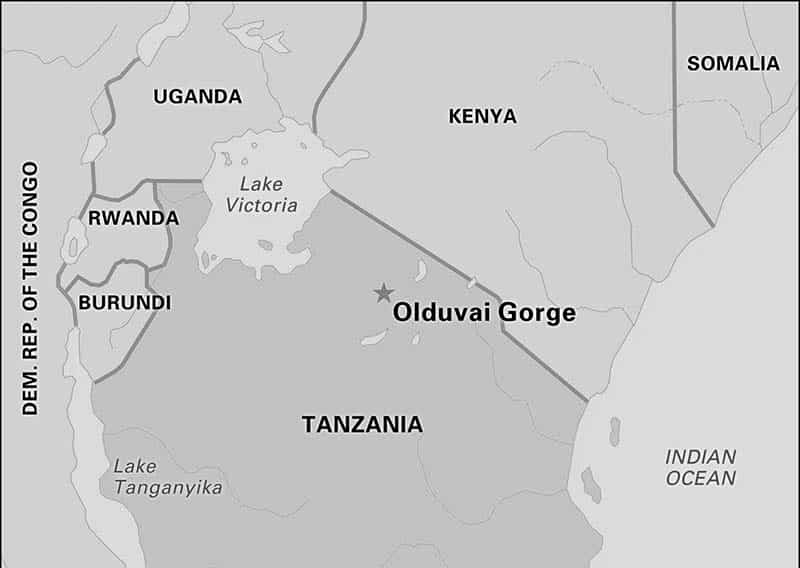
Olduvai Gorge on a Map of Africa
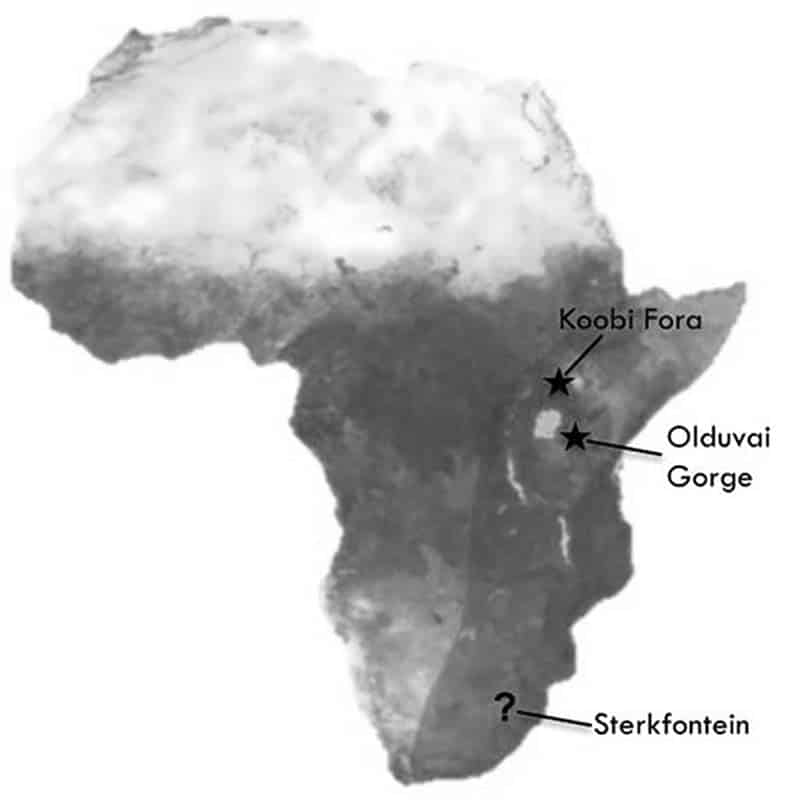
Olduvai Gorge on World Map
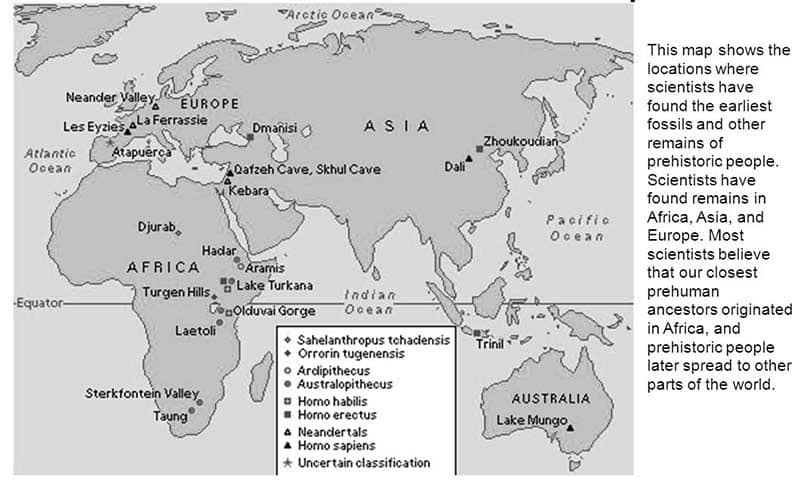
Other Tanzania Olduvai Gorge Facts and Frequently Asked Questions About Louis and Mary Leakey Olduvai Gorge Discoveries
Olduvai Gorge pronunciation – owl·duh·vai gorj
Visit Olduvai Gorge:
- Olduvai Gorge museum entrance fee – Tripadvisor would be a great place to search for this since the Tanzania Ngorongoro Conservation Authority have not provided this information on their website
- Olduvai Gorge tours – Viator.com is a recommended website, where you can find tour operators specialized on this location.
Olduvai Gorge Photos
For more articles related to Tourist Attractions in Tanzania click here!























